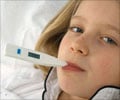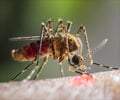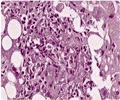The World Health Organization (WHO) has launched a comprehensive immunization programme across 12 highest-risk countries in West Africa, and aimed at covering as many as 48 milllion people.
The initiative is being undertaken to counter the yellow fever, resurging in the region and is backed by a $ 58 million contribution from the GAVI Alliance.The Alliance (formerly known as the Global Alliance for Vaccines and Immunisation) is a public-private partnership focused on increasing children's access to vaccines in poor countries. Partners include the GAVI Fund, national governments, UNICEF, WHO, The World Bank, the Bill & Melinda Gates Foundation, the vaccine industry, public health institutions and nongovernmental organizations (NGOs). The GAVI Fund provides resources for the Alliance programs.
Childhood immunisation is one of the best values in health care, providing tremendous benefit at very low cost. A child can be immunised for only $30. It is a near-perfect intervention, preventing disease before it is allowed to take root, protecting children when they are most vulnerable and providing them with a healthy start in life.
The GAVI alliance website notes - The Alliance addresses one of the world’s most glaring injustices: the inability of the poorest countries to provide vaccines for all of their children. Roughly one child in four does not receive any vaccinations. Of the 130 million children born each year, two to three million will die from vaccine-preventable diseases.
"The Yellow Fever Initiative will be able to vaccinate at-risk populations and thus quickly reduce the risk of devastating outbreaks that could otherwise threaten the region and the world," Mike Ryan, Director of the WHO Department of Epidemic and Pandemic Alert and Response said in Geneva, where the World Health Assembly is convened.
To prevent yellow fever infections from spreading into an epidemic, immunization coverage must be at least 60 to 80 per cent, according to WHO. Until now, though, the vaccine has often been too expensive in light of a host of competing health problems and coverage rates in some West African countries are critically low, the agency said.
Advertisement
Between the 1940s and 1960s, widespread mass vaccination campaigns in some African countries had resulted in the almost-complete disappearance of yellow fever, an acute viral disease transmitted by mosquitoes that may kill up to 50 per cent of those with severe cases, WHO said.
Advertisement
"As we see more people moving to cities for work, but returning to their rural villages from time to time, we also see the possibility of Yellow Fever epidemics multiply," said Sylvie Briand, Project Manager of the Yellow Fever Initiative in WHO.
Benin, Burkina Faso, Cameroon, Côte d'Ivoire, Ghana, Guinea, Liberia, Mali, Nigeria, Senegal, Sierra Leone and Togo are the countries covered by the initiative.
Source-Medindia
GPL/B











